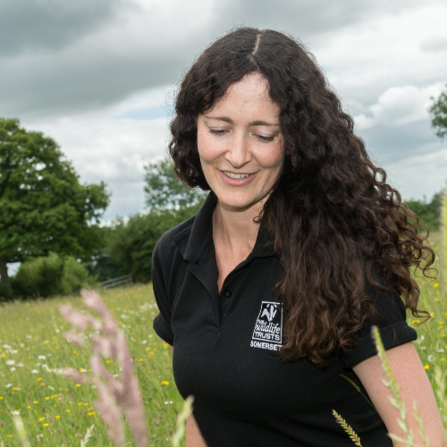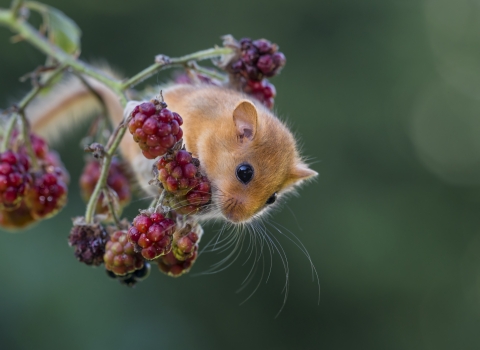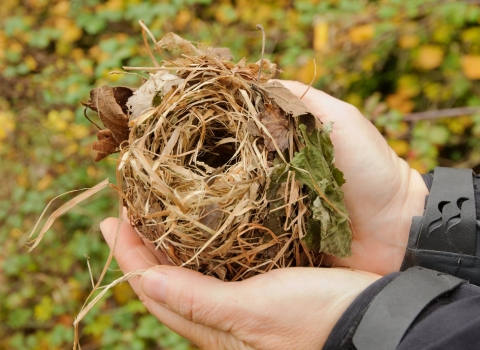The Habitat Management project 2024
Dormice are often regarded as “canaries in the coalmine” – as a woodland-specialist, a drop in dormouse numbers can reflect a loss or fragmentation of good-quality woodland habitat, something that is likely to impact many other woodland species. Restoration, creation and linking-up of scrubby wooded habitats is needed to help dormice populations recover, bringing benefits for other wildlife also hard-hit by the loss of scrub, woodland and hedgerows in the landscape.
Our grassland and woodland reserves in Mendip form core areas in Somerset’s Nature Recovery Network. It's vital that we secure biodiversity here and prevent further habitat fragmentation through restoration and habitat creation programmes.Head of Nature Reserves
We’re delighted to share that Somerset Wildlife Trust has secured new funding to support a group of neighbouring nature-friendly landowners in the Mendip Hills to enhance habitats for dormice. This builds on the positive momentum of the group from the first phase of the Habitat Management for Dormice Project in 2023, with further Farming in Protected Landscape (FiPL) funding now granted to help boost declining populations of this charismatic species on their land in Phase 2.
The UK population of dormice has declined by over two-thirds since 2000 alone. In Mendip, long-term volunteer nest box counts indicate that a similar downward trend is also likely to be occurring locally, requiring urgent action to turn things around. Opportunities for “easy win” yet significant habitat improvements were identified during a number of site visits in 2023 and the lack of scrub was highlighted as an issue in Mendip, especially where deer browsing pressure is at its highest.
Project team
The project is led by Lila Morris, Mendip Nature Recovery Officer, supported by Mendip reserves staff carrying out surveys and habitat management.
Lila Morris

Lila Morris, Mendip Nature Recovery Officer
Lila is an ecologist, land management adviser and wildlife surveyor, who works with volunteers and landowners to restore wildlife habitats, and has mapped habitats across Mendip to understand how well they interconnect as ecological networks. She is passionate about giving people opportunities to learn traditional skills such as coppicing and hedge laying, as well as survey skills.
Contact: email lila.morris@somersetwildlife.org


